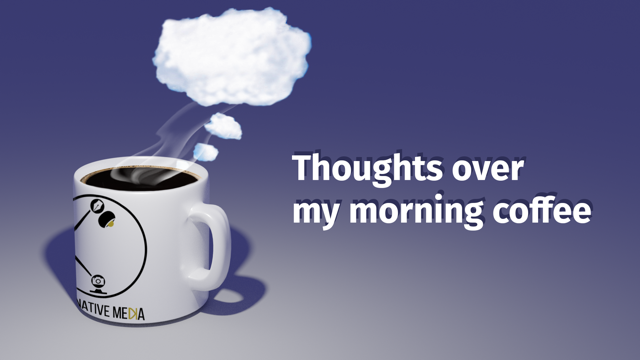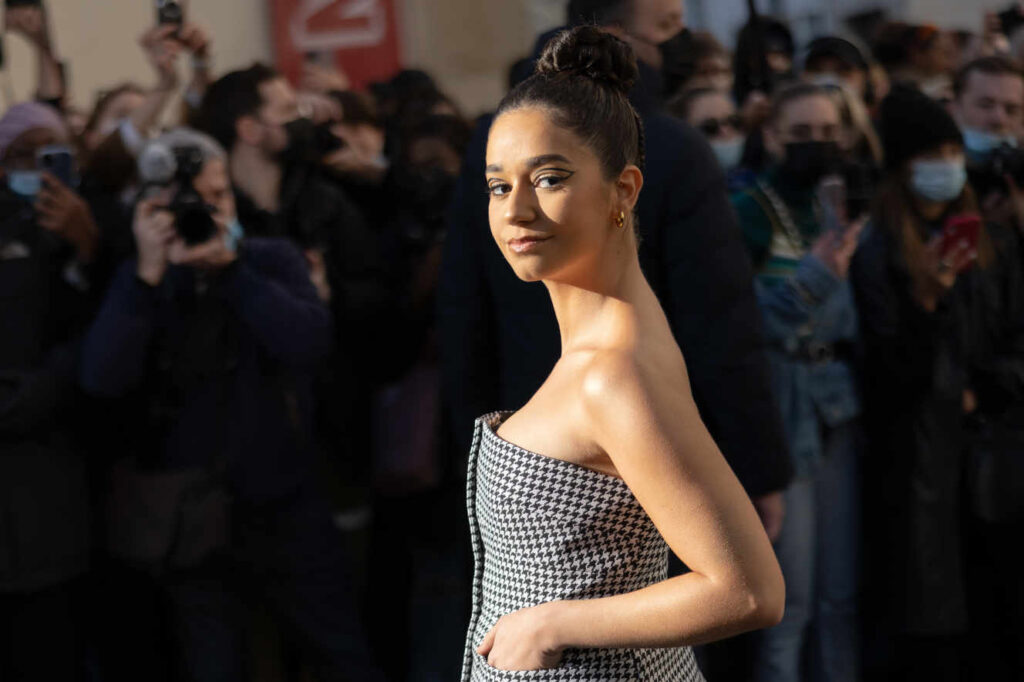

Never heard of her? Read on.
4 November 2022 – In yesterday’s post about Big Data analytics, my Chief Technology Officer, Eric De Grasse, quoted a section of my book-in-progress wherein I noted almost all of culture is being steadily absorbed into the discussion of business, and metrics. There are “metrics” for phenomena that cannot be metrically measured. Numerical values are assigned to things that cannot be captured by numbers. They drive culture. And as my wife reminded me, that especially holds true in the fashion industry.
Years ago, when we were living in New York City, my wife worked for Versace. I became fascinated by the fashion industry. I attended numerous “handbags at dawn” events in New York City, and then London (the events were actually titled “Intellectual Property and Fashion Economics”, but informally called “handbags at dawn”) and were a 2-day conference with experts in fashion economics, fashion marketing and consumption, and copyright law. Later they would add an e-discovery component.
Algorithmic fashion is very much a thing: fashion houses have been increasingly giving consumers something that consumers have already suggested – more or less implicitly. I did a deep dive into all of this a few years ago which you can read by clicking here.
I thought about this again this morning as I was reading an article in Le Monde about the fashion industry, the power of social media – and capital expenditure. Yes, capital expenditure.
You probably don’t know who Lena Mahfouf is, but you might have heard of Lena Situations. This is the name on her Instagram account, which is followed by 3.9 million people, and her YouTube channel, which has 2.42 million subscribers. This 24-year-old is an influencer, one who has become a “friend of the house,” according to Dior. That screen shot above is from the video of her arrival at the Paris fashion show – “liked” by 550,000+.
In the 1990s, young French people flipped through Elle, Glamour and Biba magazines. Now they scroll on their phones, swiping between Instagram and TikTok, via YouTube, Snapchat and Facebook. Influence has shifted, even if traditional media still has a share of it. The stars of Instagram, YouTube and TikTok have made themselves indispensable to the global fashion industry, which has a turnover of €154 billion in France.
Because, as in all things, time as a commodity. And social networks are always vying for fashion brands’ advertising budgets. In Paris, Meta (you know, the parent company of Facebook, Instagram and WhatsApp) has built a hub entirely dedicated to the fashion sector. About 50 people work there, offering “commercial support” to brands, to help them adapt their communication to mobile formats and short videos.
In London, TikTok is building up its team to do the same thing. The Chinese platform recruits advertising and luxury specialists by the dozen, including Kristina Karassoulis, the former advertising director of the Financial Times newspaper in London. What do these platforms sell to brands? An audience and its time. The hashtag #fashion ranks among the five most used hashtags on Instagram, which has more than 2 billion monthly users worldwide.
Last week the research firm Insider Intelligence issued its latest metrics report on social media (a few firms do this but I think Insider Intelligence is the best). On average, in the United States, social network followers spend 45 minutes a day on TikTok and YouTube, 35 minutes on Twitter, and more than 30 minutes on Facebook or Instagram. In France, among 15-24 year olds, Snapchat has 6.1 million users, ahead of Instagram and TikTok, which have 5.1 million and 3.4 million respectively (according to French media research firm Médiamétrie).
No brand can ignore these numbers. The amount of money allocated to social media platforms is skyrocketing. Ad spend on social media and media across all sectors is expected to reach $187 billion in 2022 (€193 billion), or 25% of the total market, according to the media buying agency Zenith, which predicts that they will grow by an average of 15% per year by 2024.
NOTE TO READERS: there has been much ink spilled (see what I did there?) the last 2 weeks about Big Tech’s latest earnings reports and forecasts that point to an unexpectedly pronounced deceleration in ecommerce and digital advertising as consumer demand slows. Bullshit. It misses the point. More later today in a longer post about the real macro trends and the capex arms race.
The spending is expected to reach $300 billion by 2024. Between them, Google and Meta rake in 70% of online advertising investment. On Facebook, the number of fashion advertisers jumped 41% in 2021, according to the British research institute Kantar. As of early 2022, Kantar lists the German online retail giant Zalando, the Danish jewelry maker Pandora, the Italian luxury goods company Gucci and the American sportswear company Nike among the most active.
Product placements with influencers are also taking off – between March 2021 and September 2022, Ms. Mahfouf created 17 posts for Dior, almost one per month. That’s the equivalent of $4.6 million in “media impact,” calculates the fashion brand consultancy Launchmetrics.
And Instagram’s influence infiltrates the entire fashion ecosystem. Catwalk models are now also chosen according to the number of followers they have. And why did French luxury label Celine choose Lalisa Manobal as one of its muses in 2019 and not somebody from the “usual suspects” model list? She has 82 million Instagram followers.
Now, I was in the fashion industry long enough to know about the rate of transformation – of a post into a purchase – which can reach record rates of 30% to 40%. Celine Chevy, who is a brand and impact director and follows all of this stuff, told me this is just the beginning of the story. Until now, brands have gone on social networks to increase their awareness. But today, following the lockdowns and the associated boom of online sales, it is more the transformation rate that advertisers expect. They all hope that the user will click on a link to their brand’s site to buy the product promoted in a post.
The short videos shared on social media, a new type of ad spot, are effectively a sales podium (my video team moonlights as producers of such videos and my chief videographer won an Italian fashion award for one piece he produced). In 2020, 36% of social media users said they had purchased a product after viewing a “story” – the format of a short video or a series of photos. In the United States, the number of followers of social commerce (online sales linked to social media) is booming: in 2025, it will reach 69 million on Facebook, 47.5 million on Instagram and 37.8 million on TikTok, according to the research firm eMarketer.
Within three years, social commerce could jump from €82 billion to €233 billion in apparel in the United States, China, the United Kingdom, Brazil and India. It could also double, to €14 billion, in the luxury sector, according to a study by the consulting firm Accenture Song. In the latter sector, where in-store purchases remain important, online sales could exceed 30% by 2025, compared to 12% in 2019, according to Bain & Company. On Instagram, users are increasingly scrolling “with the intention to buy,” said Frederique Schmitt-Singh, executive director of Accenture Song.
All brands dream of hitting the jackpot on Instagram – perhaps of replicating “the craziness of Jacquemus,” according to one specialist in women’s ready-to-wear. This French brand is a hit on social media, with an Instagram account followed by more than 5 million people. In just a few hours its creator, Simon Porte Jacquemus, sold several thousand models of the Chiquito, a tiny handbag, thanks to one photo and a simple comment announcing that it was “back in stock”.
TikTok is not to be outdone. The platform boasts of its #tiktokmademebuyit hashtag, which its users post when showing off their purchases – it has been seen more than 21 billion times. The Chinese company claims that more than two-thirds of its members say they are influenced to shop by TikTok.
For SMEs, social networks have become indispensable Swiss Army knives. For many designers who are just starting out, Instagram is a way to make themselves known. For them, the social network becomes an indispensable sales channel. Founded in 2014, fashion label Balzac Paris has a team of 15 people managing its marketing, with a focus on social media, out of a total of 70 employees. Instagram can also serve to modernize a brand’s image. Without resorting to sponsorship or subsidies, Paraboot has become “sexier,” said Davy Montillet, head of promotions at the French leather shoe brand, which has been around for generations. In a few months, thanks to a few “inspirational” posts, its community has reached 140,000 people.
However, the brand is not able to quantify the exact number of sales obtained online. So what is the return on brands’ investments? Ah … and so we return to metrics. Advertisers lack the tools to measure and track it, and many in the industry disapprove of some platforms’ “opacity”. Advertisers continually ask social media networks for more information on the impact of a campaign.
The algorithm that ranks content on Instagram is also considered to be very complicated. So you now have to fight to be visible. A communications manager at Ogilvy (where I had my first job in the advertising industry) told me “What’s the 8 o’clock news for Instagram or TikTok? Nobody knows. On Instagram there are many candidates for a few places”.
On the flipside, the constant stream of sponsored posts on social media annoys some users. Instagram is no longer the space of freedom and spontaneity that it was at its inception. Ten years ago the social network was an oasis for discovering fresher, less expensive fashion items rather than the “diktat” of luxury advertisers seen in women’s magazines.
Today, this is not so much the case. Instagram has been “consumed” by fashion brands. Could the platform already be saturated with advertising? On average, a brand posts 4.6 videos per week on Instagram, compared to 1.8 on TikTok, according to digital research firm Rival IQ. With this comes the risk, of diluting the message.
So you need to really put on your thinking cap and and be careful to have a good ratio between advertising and content. The goal is always “Create a satisfying experience for the user”. Ads are also an alternative type of fee. One industry study found 75% of users prefer to browse free social networks with ads, rather than having to pay to access them.
For me, it remains a fascinating industry. I still receive the occasional request to do some research for an old fashion industry client who might be looking for applications of text and visual and data mining (TDM) techniques in various fields, especially fashion, in preparation for a large cross-border fashion copyright e-discovery project. It keeps my hand in.
